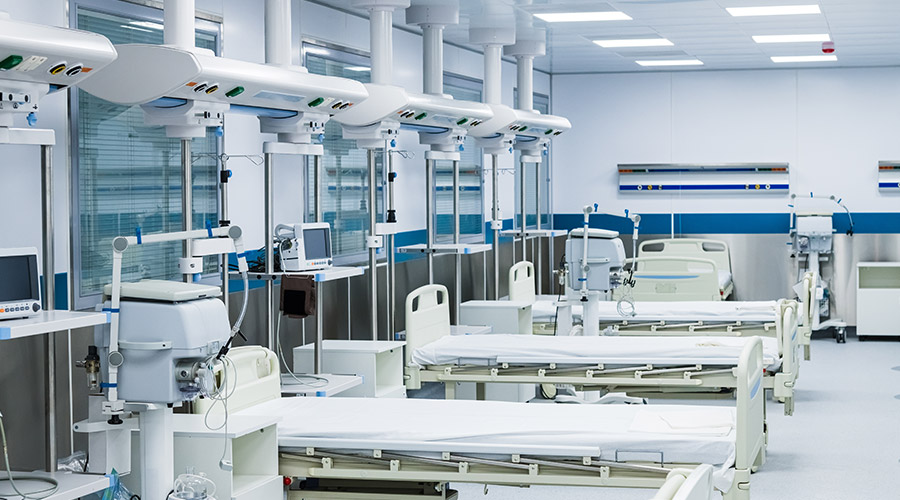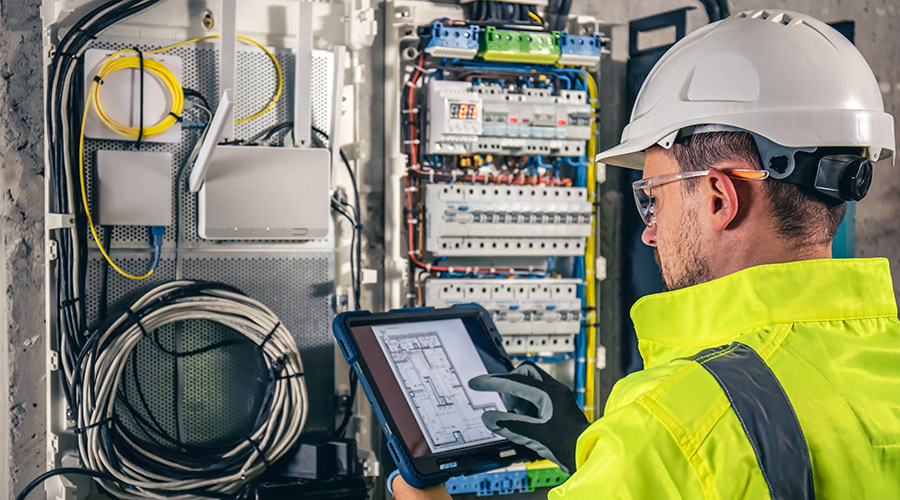With rising healthcare costs, facilities managers are continually looking for ways to cut costs in areas that won’t directly impact the quality of patient care, such as real estate. That trend – coupled with the complexity of managing resources and rooms, often across multiple buildings and campuses – is leading hospitals and other healthcare facilities to look for ways to use space more efficiently.
Hospitals across the country are spending billions of dollars annually to expand and renovate their facilities to accommodate mergers and expanded services, as well as to modernize and address the growing needs of patients, including an aging Baby Boomer generation.
Fortunately, there are best practices facilities managers can adopt that not only preserve resources and reduce costs, but that also provide added benefits to these institutions. Following are four of these best practices:
• Consider hoteling or hot-desking. It’s no longer necessary – or even practical – to have a dedicated office space for every hospital employee. In today’s work environment, many staffers, including IT professionals, auditors and others, have to travel between multiple locations and are spending less time in one place. Similarly, those with more direct patient care responsibilities – and their supervisors and administrators – need to spend more time on the front lines. With the rise of larger facilities spread over many buildings or campuses at multiple locations, the one-desk/one-employee ratio is no longer sacrosanct. Instead, savvy health care facilities managers are turning to hoteling, also known as hot-desking, which allows personnel to sign up for the space they need on each day, rather than having an assigned, permanent space. This can significantly decrease construction and real estate costs, and with it, bring along a host of other benefits, including reduced carbon footprint and an enhanced employee experience by creating an opportunity to interact with new colleagues.
The National Health Service (NHS), which is the publicly funded healthcare service in the UK, is an example of a healthcare institution that is effectively conducting hoteling. Through this approach, NHS has been able to increase its employee-to-desks ratio, reducing real estate overhead and using the funds for patient care. It has also helped to boost productivity, communication and employee experience by enabling people to work in areas that best suit their work needs, while having the flexibility to move between buildings as needed.
• Make it easy for everyone to book the space they need. Staff space needs depend on the task at hand. While a presentation may require a conference room, analytical work, for example, might be better suited to a quiet space, and a brainstorming session might call for an informal environment with white board tables and comfortable chairs. Forward-thinking healthcare facilities are using an Activity Based Working (ABW) model to provide flexible spaces for employee use based on the activities that they are engaged in.
In addition, these institutions are making it easy for employees to schedule the rooms and resources they need from their mobile devices or any browser using scheduling technology, which furthers the employee experience. Staff can also reserve AV equipment, catering and other resources, and designate the room layout, whether it’s conference style, theater style or something else. For example, employees – especially those doing double or overnight shifts – could sign up for nap spaces in advance.
• Don’t let space go wasted. It’s not uncommon for meetings to be cancelled, postponed or moved to a different location at the last minute. Unfortunately, too often that results in wasted space; a report9 from Unwired and Plow Consulting found that no-shows – room and desk bookings that people fail to show up for - cause 30% of meeting space to sit empty. In addition, it also reduces the potential collaboration and productivity time of other employees who wanted to use that room, as well as incurs the hidden cost of carrying space that’s not being fully used. Forward-thinking facilities managers are using smart space utilization tools to identify “no shows” and free up space – whether it’s conference rooms, desks or other space – so it can be available for use by others.
Additionally, some healthcare facilities managers are using analytics to identify which space is under- or over-utilized. Is there one room that’s rarely used that can be converted to another type of space that’s in high demand? Does the facility need to buy more AV equipment or other resources to accommodate staff needs? Can the facility hold off on expansion plans by making changes to use its space more efficiently? These are the types of questions that analytics can help facilities managers address.
• Focus on visitor security. While security is of utmost importance for any healthcare facility, it’s also important to create a welcoming environment for visitors. By allowing visitors to use self-service technology to easily check in and avoid lines, have their badges printed and receive Wi-Fi codes – facilities managers can create a positive visitor experience and free up receptionists’ time to focus on other duties. At the same time that an automated system is handling these processes, security and data privacy practices are being conducted in the background. Visitor information is being checked against the access control system, and screened against restricted and denied access lists. Visitor movements can be logged as they move around the building to maintain site security, and a comprehensive audit trail is generated to improve compliance.
Innovative facilities managers are leveraging technology and best practices to utilize their space more efficiently and significantly reduce overhead – a necessity in today’s environment of skyrocketing healthcare costs. At the same time, they are also realizing other key benefits, such as improving the staff and visitor experience, streamlining processes and tightening security. Additionally, by optimizing real estate, resources and assets, healthcare facilities will be more agile and well-positioned for what may lie ahead for the industry in 2020 and beyond.
John Anderson is CEO of Smartway2.

 How Architects Shape the Future of Healthcare Facilities
How Architects Shape the Future of Healthcare Facilities UNC Health, Duke Health Form Partnership for Stand-alone Children's Hospital
UNC Health, Duke Health Form Partnership for Stand-alone Children's Hospital Sarasota Memorial Hospital Plans to Build New Facility in North Port
Sarasota Memorial Hospital Plans to Build New Facility in North Port CMMS, Data and the Path to Compliance
CMMS, Data and the Path to Compliance Healthcare is a Major Ransomware Target
Healthcare is a Major Ransomware Target